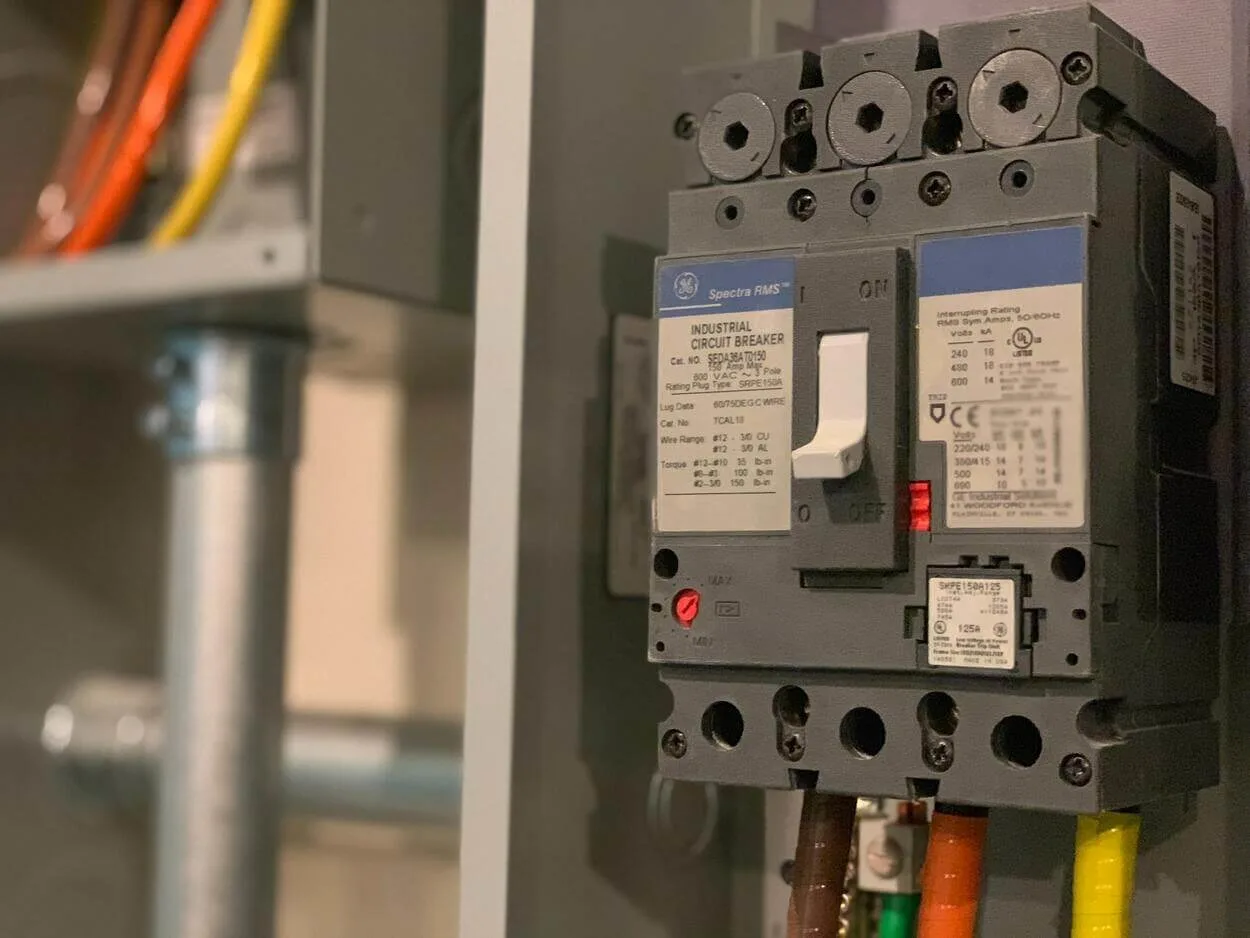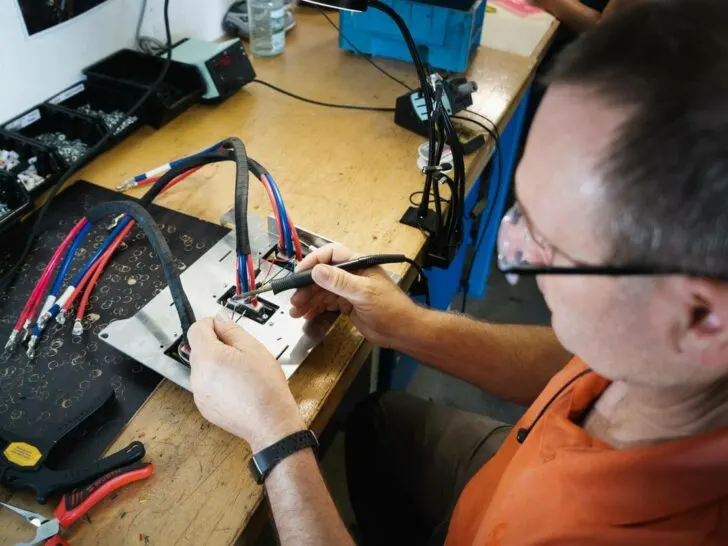Regarding electrical trades, the terms line and load are shorthand words. One refers to wires which deliver power from the source to a device. The other refers to wires that carry the power onto other devices along the circuit.
Many more conversational terms can be used to describe such wires. For instance, they’re called incoming and outgoing wires or upstream and downstream wires. The terms line and load have many applications in an electrical system at different locations.
However, if you’re not a mechanical expert, mixing them up is really easy. But don’t worry, as I’ve got you covered! In this article, I’ll provide a range of differentiating factors to help distinguish these two wires.
So let’s get right to it!
What’s the Difference Between Load and Line Wires?
The difference between them is pretty straightforward. The line wire is the one that goes from a current source into a switch or an outlet device. Whereas the load wire is the one that goes from the switch to the device or appliance.
Outlets, switches, light fixtures, and other electrical appliances are wired on a single circuit in multiples. The line wire runs from the service panel to the first device.
On the other hand, the load wire runs from the first device to the second device “downstream” on the circuit. The line wire is “upstream” from the switch in terms of the flow of electricity. Another meaning for load is the magnitude of the energy devices consume on a circuit.
For the second device, the line is the power source coming in from the first device. The load wire flows out to the third device on the circuit, and so on.
Differentiating between a line and a load wire isn’t always necessary. For instance, a conventional wall switch has a single-pole, single-throw switch.
It’ll work equally well if you attach the live circuit wire, which is line wire, to the top brass terminal or if you attach it to the bottom. This is because the switch only has two positions. It’s either open or closed.
Distinguishing Line and Load Wires in Special Circuits
However, on a double-throw switch, the terminal connections are directional. This is because it can transfer power between multiple loads.
In such a switch, the line and load terminals are clearly marked. In this case, the live circuit wire must always be connected to the line terminal.
There’s also a difference between line and load wires regarding the GFCI outlet. A GFCI outlet is short for “ground fault circuit interrupter”.
These have two pairs of screw terminals for connecting wires. One pair is clearly marked with a line, and the other is marked as a load.
If you connect only to the line terminals, the outlet will provide GFCI protection only for that specific outlet. Whereas, if you connect to both line and load terminals, then GFCI protection will also be for other standard outlets. These are located downstream of the circuit.

How Can You Tell if a Wire is a Load or Line?
Now that you know the meanings of line and load wires, let’s look at a few factors that will help tell them apart.
Line wires supply electricity from the main power lines to electrical switches. These power lines get electricity from utility companies and then send it to a house. They’re also known as incoming wires or upstream wires.
Their main purpose is to supply electricity to the house or building. Sometimes it gets really challenging to differentiate between line and load wire colors. This is because different countries denote different colors for each of the wires.
So then, how would you identify line and load wires? There are many ways of identifying these wires in your own house. Here’s a list of a few ways in which you can do that:
- Determine the position of the wires.
Line wires are always connected to the electrical panel from the bottom. Whereas load wires are always connected from the top. So by simply looking at the position of the connected wires on the circuit, you can differentiate between the two wires in the panel. - Test each wire using a voltage tester.
You can use a volt stick or a pen to help detect the voltage without touching the bare copper wire. Make sure you test each wire connected to the switch using this pen. When the pen tester glows red, the wire is a line wire. However, if the pen tester doesn’t glow, that is a load wire. A volt stick is an efficient device to use when testing wires. - Use a digital multimeter for testing.
Basically, a multimeter is an electrical device that measures the electric values, voltages, resistance, and current in an electrical panel. Switch on the device knob to AC voltage to read 200 volts. Then, hold the insulated terminals of the multimeter and test the terminals of wires connecting to the switch. If the reading comes out to be 120 volts or above, those are the line and load wires. - Use a neon screwdriver.
This screwdriver is a tool that has a neon light inside the transparent plastic handle and a metallic tip. You can use this to touch the bare wire or the screws connecting the wire to the meter box. The neon glows if you’re touching the line wire. This means that the current is flowing in that wire. However, when touching a wire with no current flowing, the neon light doesn’t glow.
The above ways are quite easy as well as reliable. You can use either way to help differentiate between load and line wires in an electrical circuit.
What Happens if I Mix Up Line and Load Wire?
If the load or line wires get mixed up, the GFCI protection will no longer exist. This means a ground fault won’t trip the GFCI. While there will be an appearance of protection, there’s no actual protection.
The GFCI outlet’s breaker interrupts the current when it detects a sudden surge. If you interchange the line and load wires on a conventional outlet, it’ll have no such effect on the outlet.
However, if you interchange them on a GFCI outlet, then that’ll cause the breaker to be ineffective. This could be potentially very dangerous because the outlet then won’t be able to protect what it’s designed to give. It’ll be exposed!
The load wires from one upstream in the circuit must always be connected to the line terminals of the one downstream. Otherwise, the downstream one won’t function properly.
Therefore, knowing the difference between load and line wires is important. You may also seek help from professionals in this field if you can’t understand it yourself.

Is Hot Wire a Load or a Line?
Typically, the line wire is the hot wire. It goes from a source to a switch upstream of the switched device. Hotwires are used as initial power feeders to a circuit.
These carry currents from the power source to the outlet. As they’re the first instance of a circuit, they always carry electricity, which is why they’re hot. It’s dangerous to touch a hot wire when connected to a power supply.
Basically, line wires comprise three wires. These are hot, neutral, and ground wires. The ground ones are bare, whereas the hot and neutral ones are insulated.
When the hot wire has taken the power from a source, there’s another wire to complete the circuit. This neutral wire carries the circuit back to the original power source. They bring the circuit to the ground, usually connected to the electrical panel.
Its black casing can identify Hotwire. This is the main color of the hot wire in most homes.
However, they can also be red, blue, or yellow. These colors can indicate a different function besides that of powering an outlet.
Like hot wires, most electric wires are insulated to protect users from shocks. Each color on these electric wires has a different meaning. Although, the colors can be used interchangeably depending on different countries.
Use this table listing the range of colors and the wires that they represent as a guide:
| Wires | Insulation Colors |
| Neutral Wire | White and Grey |
| Ground Wires | Green with yellow stripes or green and copper |
| Line/Upstream Wire | Black casing |
| Load/Downstream Wire | Red or black casing |
Do All Light Switches Have a Load Wire?
A switch always has to have a load wire. Otherwise, it wouldn’t be able to turn anything on and off.
However, people often get confused between wires when dealing with a three-way switch. In such switches, the white wire is used to carry the current.
Therefore, it can be understood that white wires don’t always mean neutral wires. Sometimes they can also be load wires.
Moreover, the standard single-pole light switch will require you to attach the load wire. Then the other wire which is leaving the switch to your lights.
So basically, a load wire in a light switch is the one that connects your switch to your light bulb or other types of load. Usually, the load wire’s color is black. However, it can also be white in some countries or a three-way switch.
Load is also a general term to describe the electrical demand or power draw a device puts on an electrical circuit.
Take a quick look at this video explaining how single-pole switches work:
Final Thoughts
- Line and load wires are essential components in electrical circuits.
- Line wires bring power from a source to a switch or outlet, while load wires carry power from the button to a device.
- Differentiating between these wires is crucial to ensure electrical safety. It is also necessary for proper circuit function.
- Several terms are interchangeable for line and load wires. For example, incoming and outgoing or upstream and downstream wires.
- Identifying line and load wires can be done by examining wire positions. It can be done using voltage testers, digital multimeters, or neon screwdrivers.
- Mixing up line and load wires, especially in GFCI outlets, can compromise safety. It is done by rendering the ground fault protection ineffective.
- Line wires are often hot wires, typically encased in black insulation.
- Understanding the distinction between line and load wires is important. Its purpose is to work with electrical circuits safely and effectively.
You might also be interested in:
WHAT’S THE DIFFERENCE BETWEEN TIN FOIL AND ALUMINUM? (EXPLAINED)

